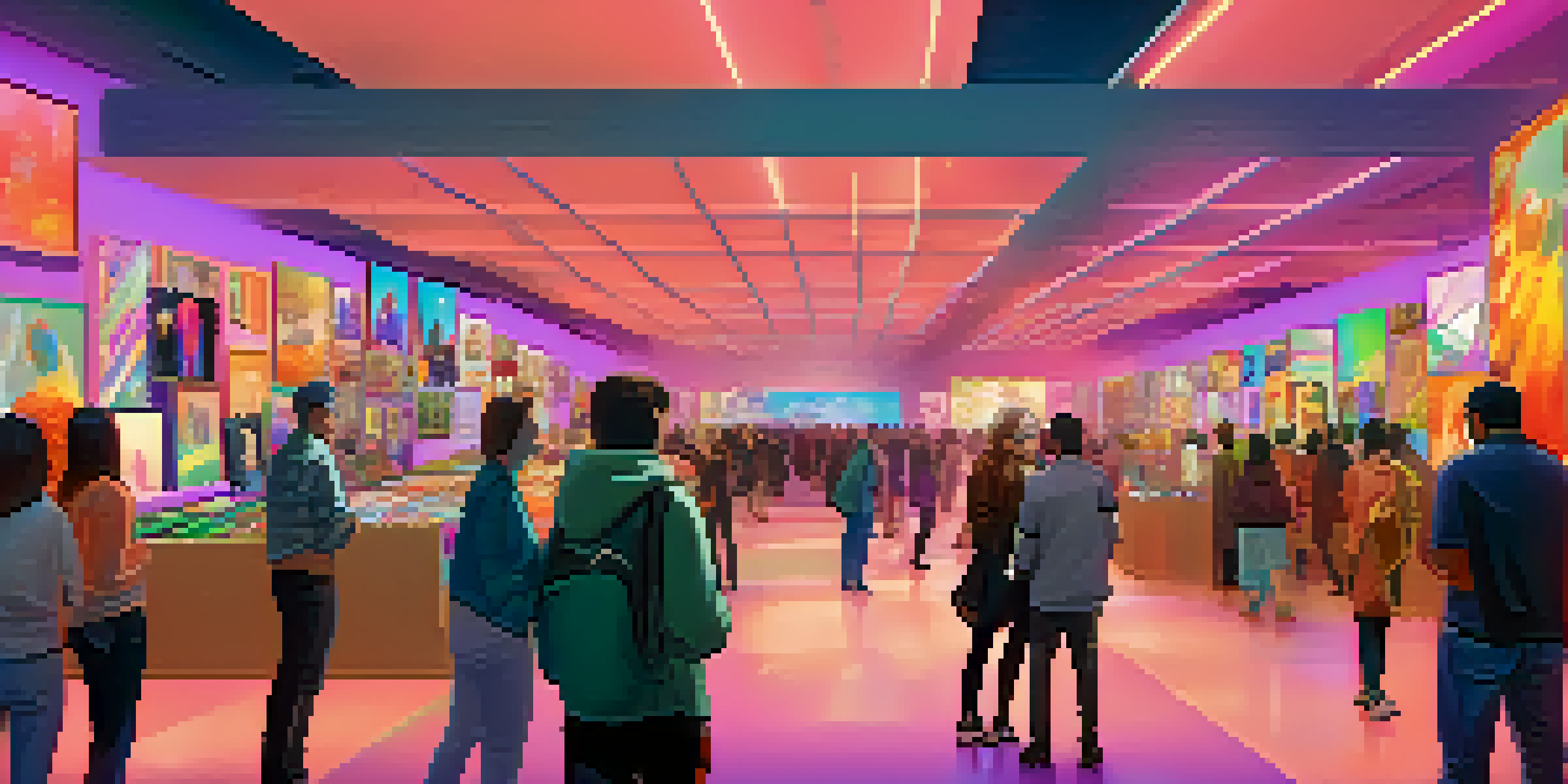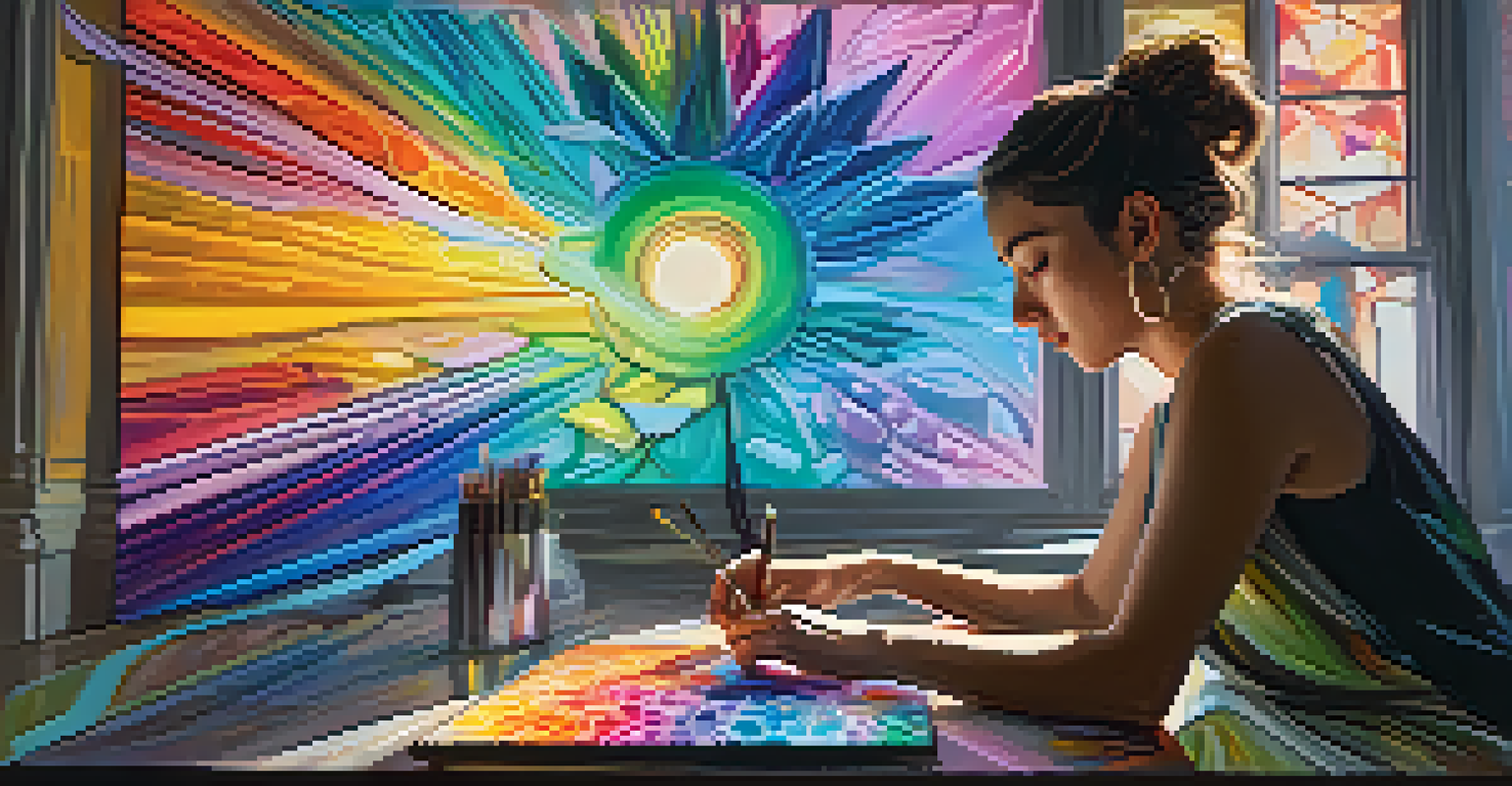Demographic Shifts in NFT Buying: Who's Leading the Market?

Understanding NFTs: A Brief Overview
NFTs, or Non-Fungible Tokens, are unique digital assets verified using blockchain technology. Unlike cryptocurrencies such as Bitcoin, which are interchangeable, each NFT has distinct information that makes it one-of-a-kind. This uniqueness has attracted diverse buyers, from art collectors to gamers, creating a vibrant marketplace.
NFTs are a new frontier for digital ownership and creativity, enabling a diverse range of voices to be heard in the art world.
The rise of NFTs has revolutionized how digital art and collectibles are bought and sold. Artists can now reach global audiences without traditional galleries, while buyers gain access to exclusive items. This shift has led to significant changes in who is purchasing these assets.
As more people become aware of NFTs, we see a wider range of demographics engaging with them. Understanding who is leading this market provides valuable insights into future trends and opportunities.
Who’s Buying NFTs? An Overview of Key Demographics
Initially, the NFT market was dominated by tech-savvy millennials and Gen Z. These younger demographics are often more comfortable with digital currencies and online transactions, making them natural NFT buyers. However, recent data suggests that older generations are also starting to explore this space.

Interestingly, the rise in NFT popularity among older buyers may be linked to increasing familiarity with digital assets. Many individuals aged 35 and above are now participating in NFT purchases, particularly in areas like digital art and collectibles. This shift indicates a growing acceptance of blockchain technology beyond the younger crowd.
Diverse NFT Buyers Emerge
The NFT market is seeing a wide range of demographics, from younger tech enthusiasts to older collectors, indicating a shift in who participates in this space.
These demographic changes highlight the evolving landscape of NFT buyers, indicating that the market is attracting a broader audience. Understanding these shifts can help creators and marketers tailor their strategies more effectively.
Gender Dynamics in the NFT Market
Historically, the tech and crypto sectors have been male-dominated, but the NFT space is showing signs of change. Recent surveys indicate that female participation in NFT buying is on the rise, challenging the status quo. Women are increasingly engaging with NFTs, particularly in creative fields like art and fashion.
The NFT market represents a significant shift in how we perceive value and ownership in the digital age.
This shift is not just about numbers; it's about influence. Female artists and creators are leveraging NFTs to showcase their work and connect with audiences. As more women invest in and create NFTs, they are reshaping the market landscape and driving trends.
The growing female presence in the NFT space provides an exciting opportunity for brands and platforms to diversify their offerings. By recognizing and supporting this demographic, the NFT market can continue to expand and evolve.
Age Groups: How Interests Vary
Different age groups tend to gravitate towards various types of NFTs. For instance, younger buyers often favor gaming and virtual items, while older collectors might be more interested in digital art or historical memorabilia. This divergence showcases the diverse interests driving NFT purchases.
Interestingly, younger audiences are also more likely to engage with NFTs as an investment strategy, viewing them as a new asset class. Conversely, older buyers may approach NFTs as an extension of their existing hobbies, such as art collection. This variance in approach highlights how age influences buying behavior.
Gender Dynamics Are Changing
Female participation in the NFT market is increasing, allowing women to influence trends and reshape the landscape, particularly in creative fields like art and fashion.
Recognizing these differences allows creators to tailor their offerings more effectively. By appealing to the specific interests of each age group, NFT projects can foster broader engagement and sales.
Cultural Influences on NFT Buying Trends
Cultural factors play a significant role in shaping consumer behavior in the NFT market. For example, pop culture phenomena, such as celebrity endorsements or viral trends, can drive interest and sales. When a popular figure enters the NFT space, it often sparks a wave of enthusiasm among fans.
Moreover, regional cultural differences can influence which NFTs are popular. For instance, certain styles of digital art may resonate more strongly in specific countries or communities. Understanding these cultural nuances is crucial for marketers aiming to reach diverse audiences.
As the NFT market continues to grow, cultural influences will remain a powerful driver of trends. By staying attuned to these factors, creators can better position their work to meet the interests of various demographics.
Economic Factors Affecting NFT Purchases
Economic conditions significantly impact consumer spending habits, including in the NFT market. During times of financial uncertainty, buyers may be more cautious, affecting overall sales. Conversely, economic booms often lead to increased discretionary spending, benefiting the NFT sector.
Additionally, the accessibility of cryptocurrencies can influence who participates in the NFT market. As more people invest in digital currencies, the potential pool of NFT buyers expands. This growing accessibility can lead to more diverse demographic engagement.
Cultural Factors Drive Trends
Cultural influences, including pop culture phenomena and regional preferences, play a significant role in shaping NFT buying behaviors and market trends.
Understanding the economic landscape is vital for predicting shifts in NFT buying patterns. Keeping an eye on economic trends can help creators and marketers navigate the ever-changing market.
Future Trends: Where is the NFT Market Heading?
Looking ahead, the NFT market is poised for continued evolution. As more people become aware of NFTs, we can expect to see even broader demographic engagement. This increasing interest may lead to new types of NFT offerings and innovative approaches to marketing.
Moreover, the integration of NFTs into mainstream platforms could further expand their reach. Social media and gaming companies are already exploring ways to incorporate NFTs, introducing them to new audiences. This could significantly shift who participates in the market.

Ultimately, the future of NFTs will likely be shaped by ongoing demographic changes. By understanding and adapting to these shifts, creators and marketers can effectively position themselves for success.
Conclusion: Embracing Diversity in NFT Buying
The NFT market is experiencing significant demographic shifts, with a diverse range of buyers emerging. From younger tech enthusiasts to older art collectors, the landscape is changing rapidly. This diversity presents both challenges and opportunities for creators and marketers alike.
By recognizing and adapting to these shifts, the NFT community can foster broader engagement and growth. Creating inclusive platforms and offerings will ensure that all demographics feel represented and valued in this exciting new space.
As we move forward, embracing this diversity will be key to the NFT market's success. Understanding who is leading the market today can help shape a more inclusive and innovative future.